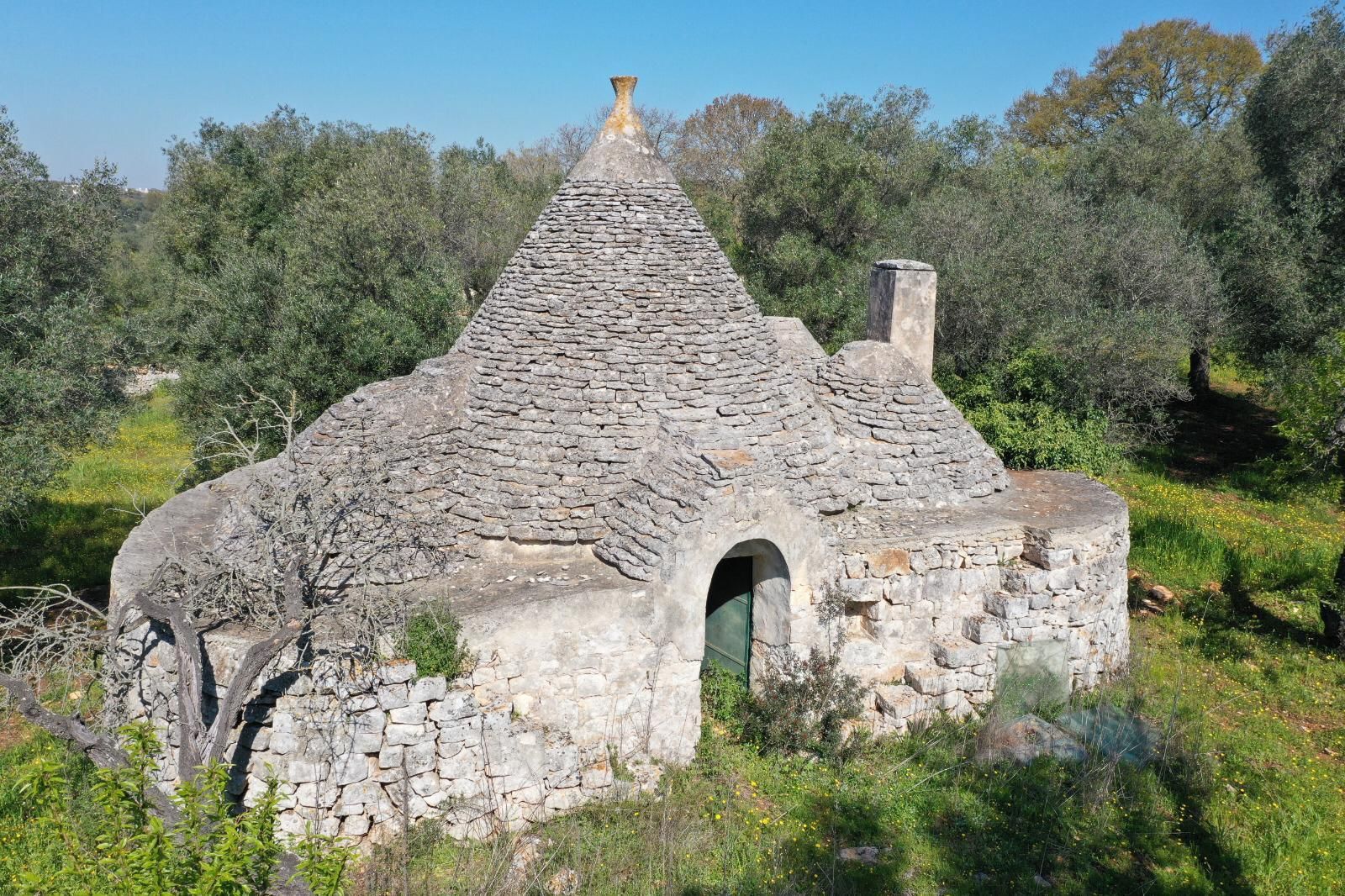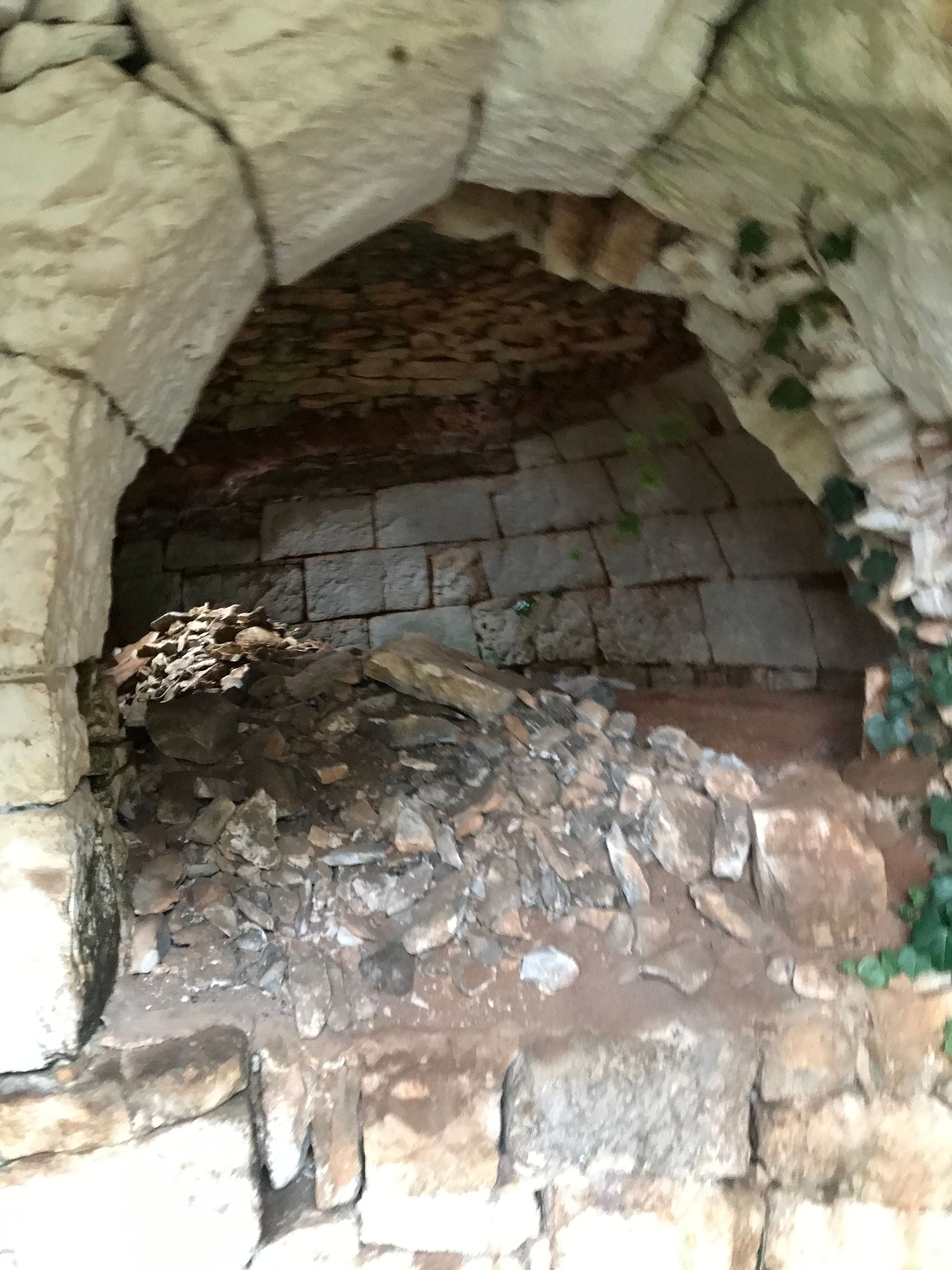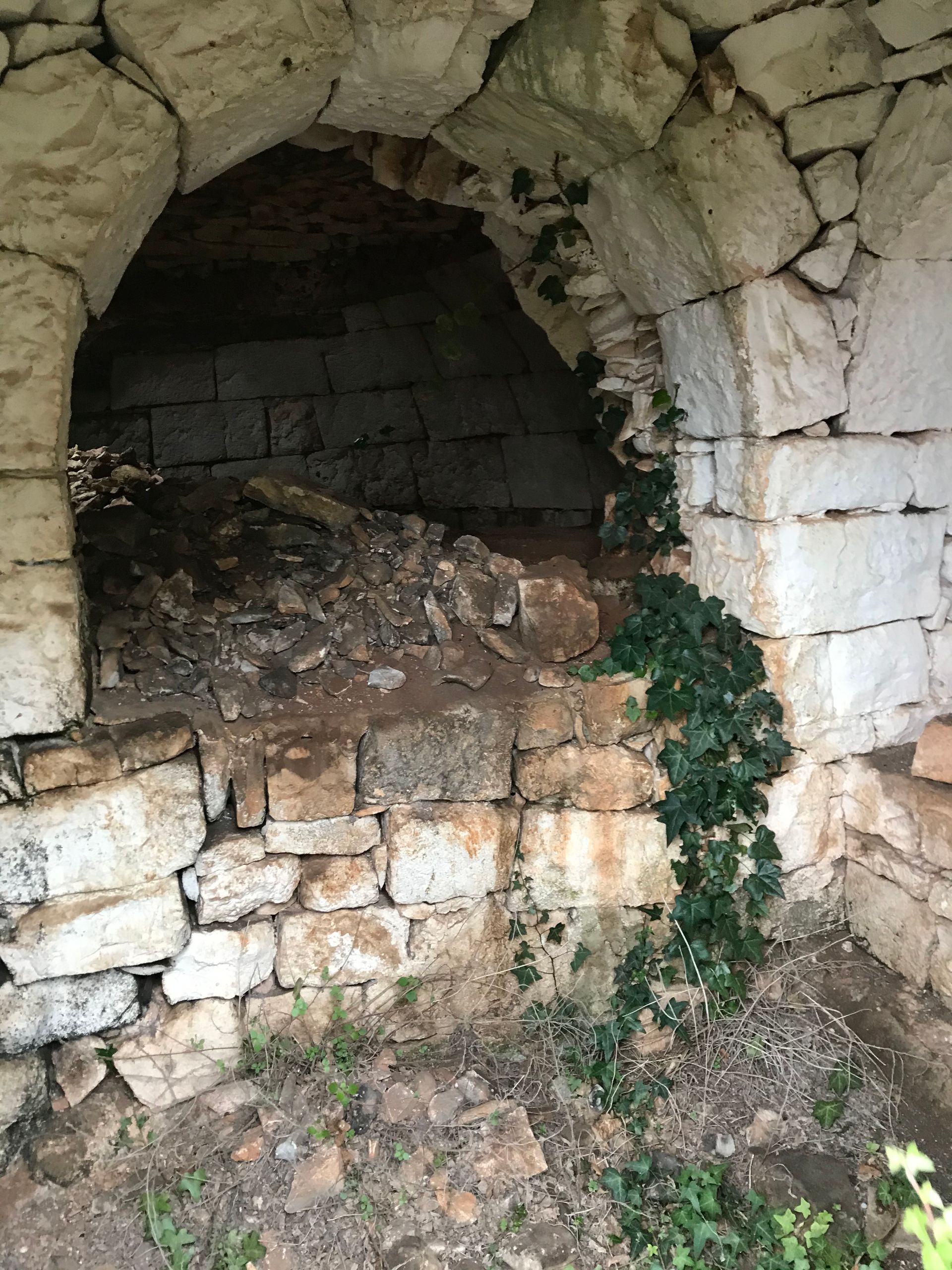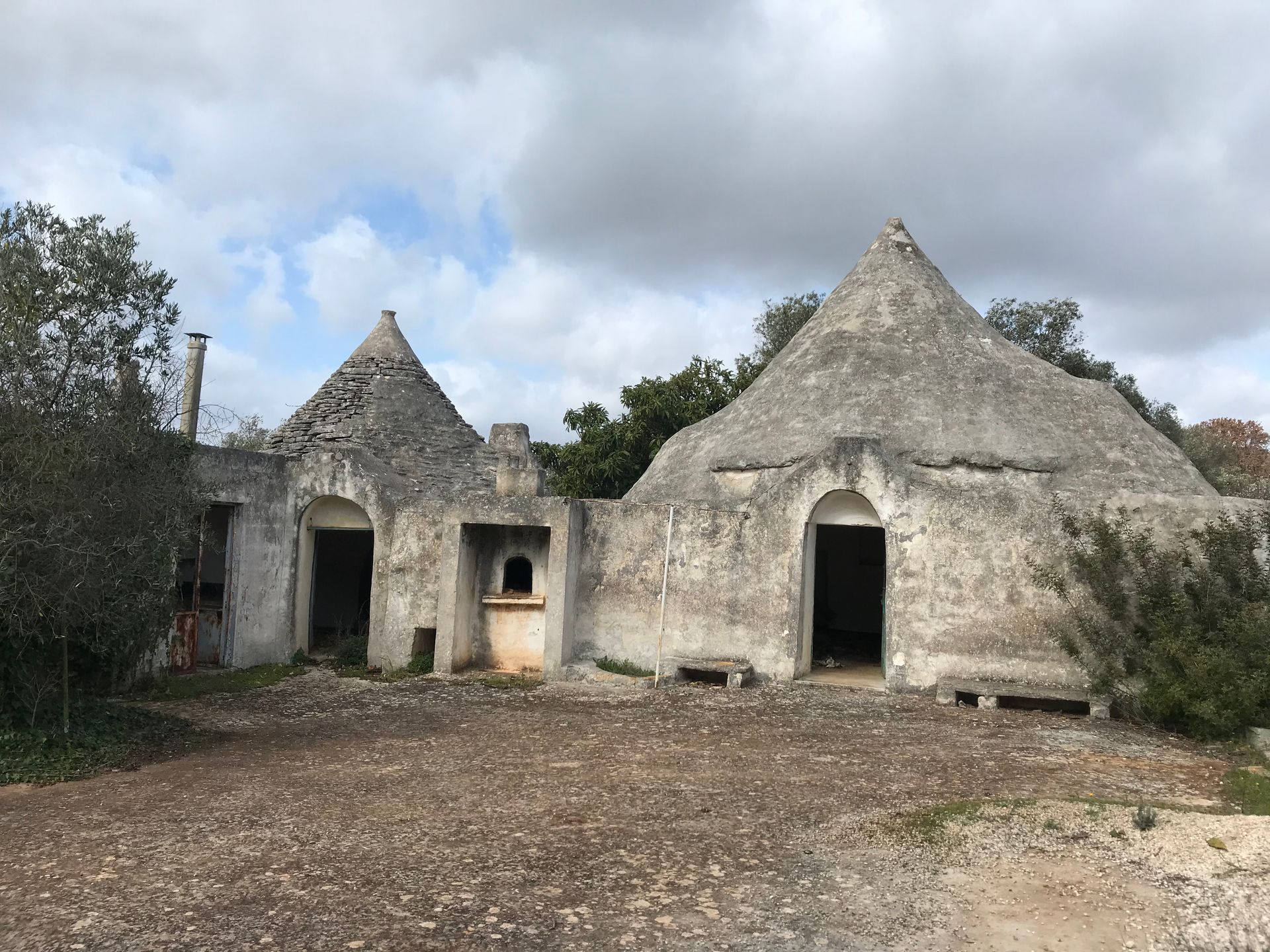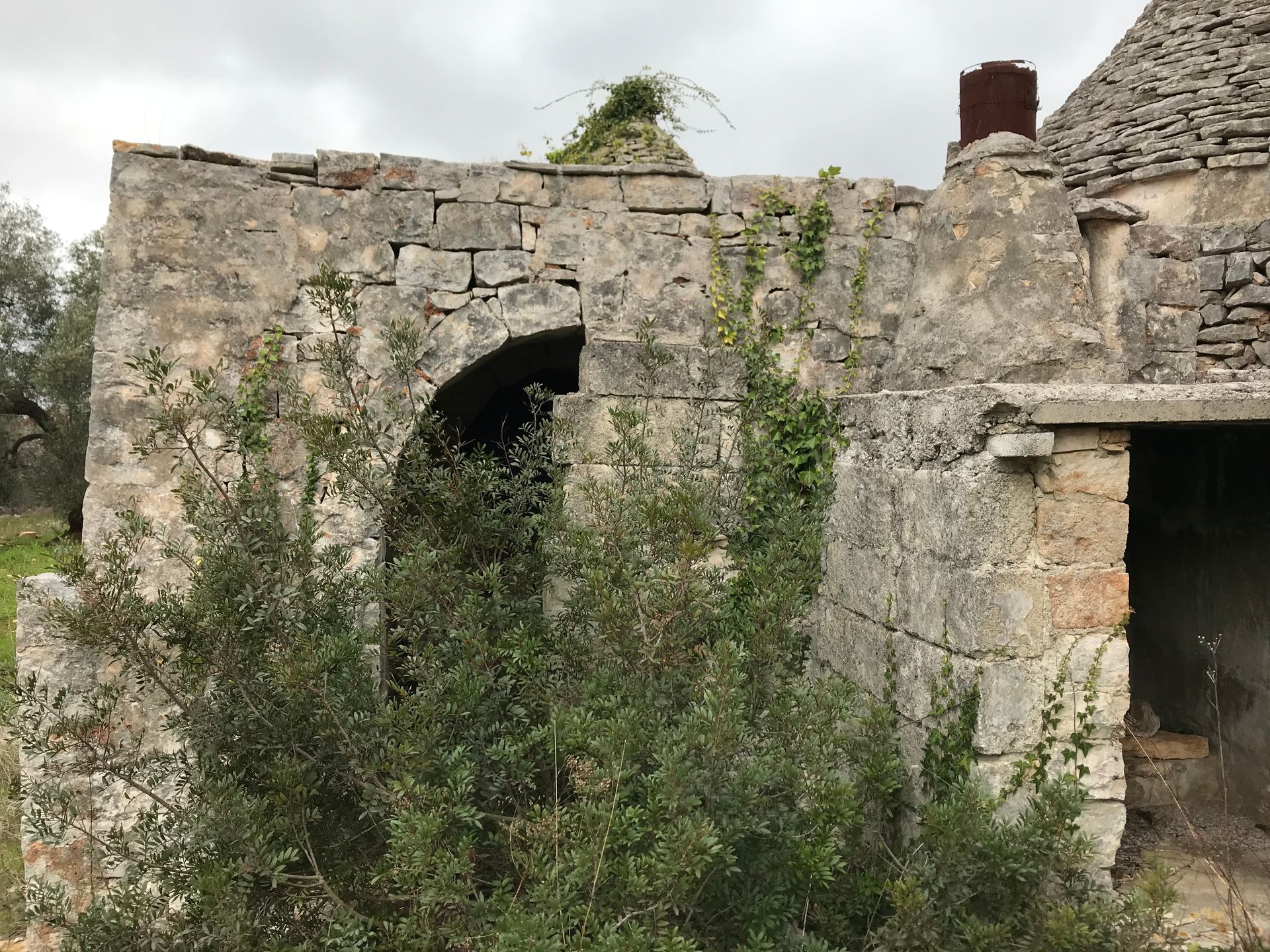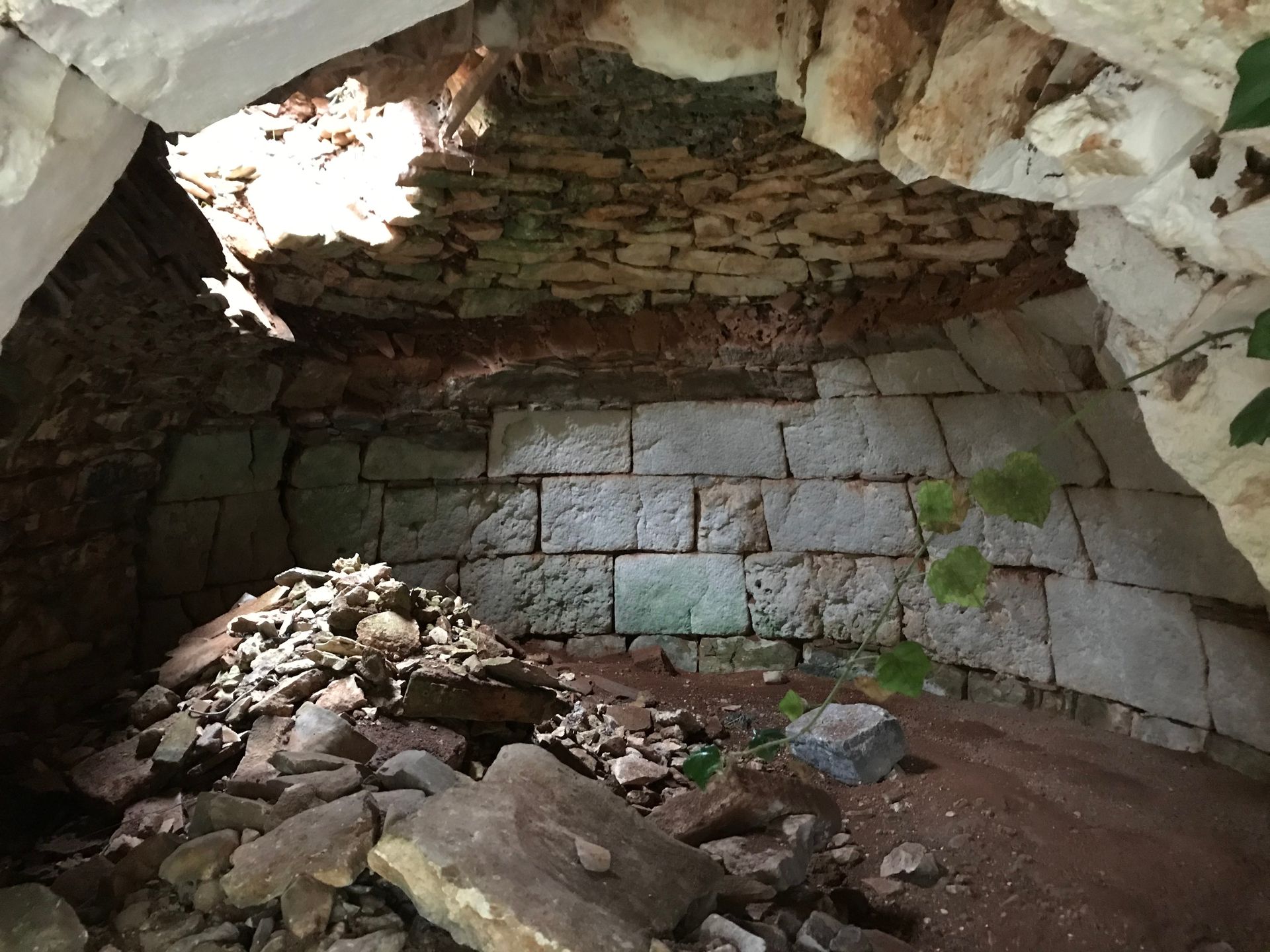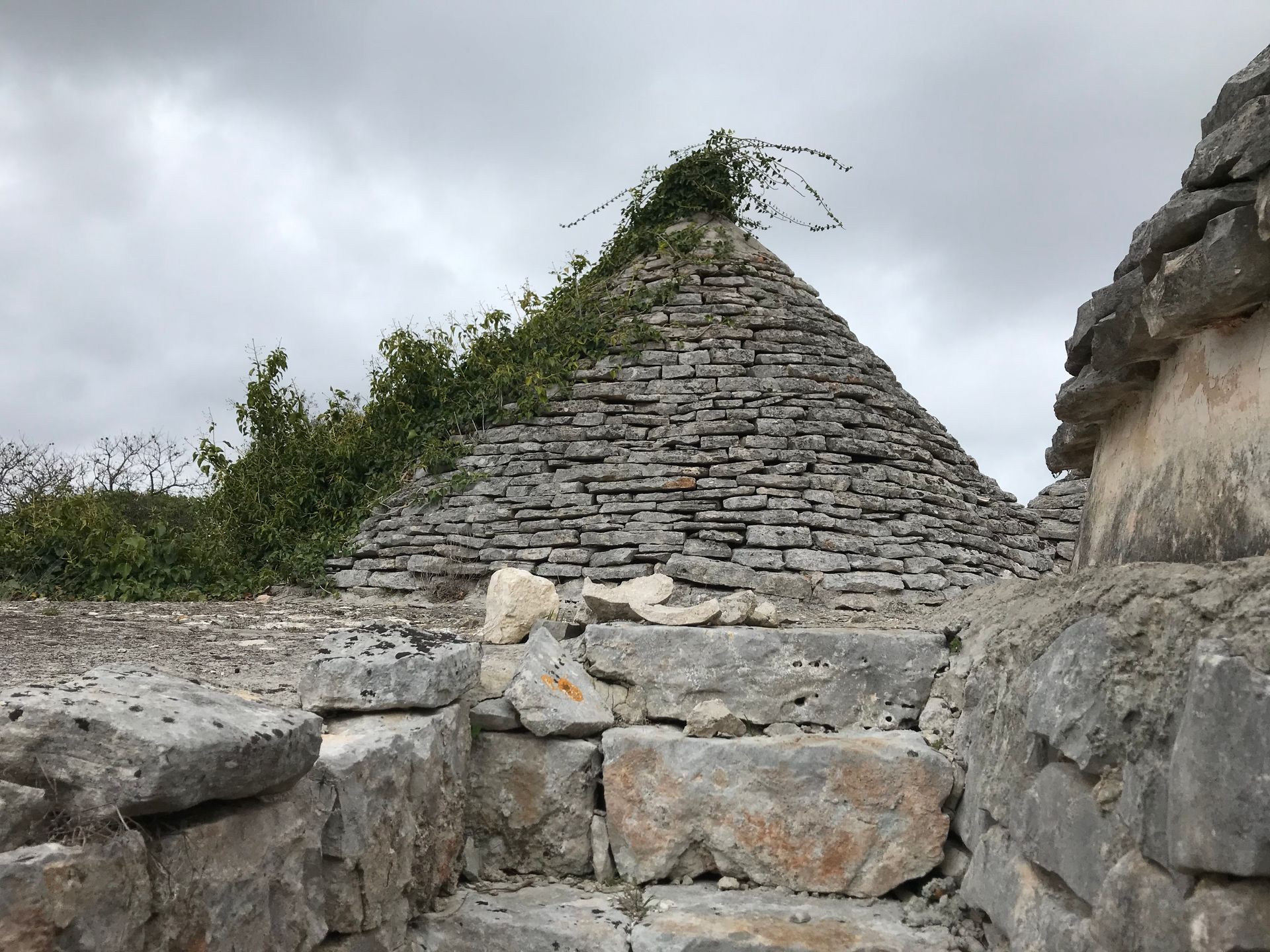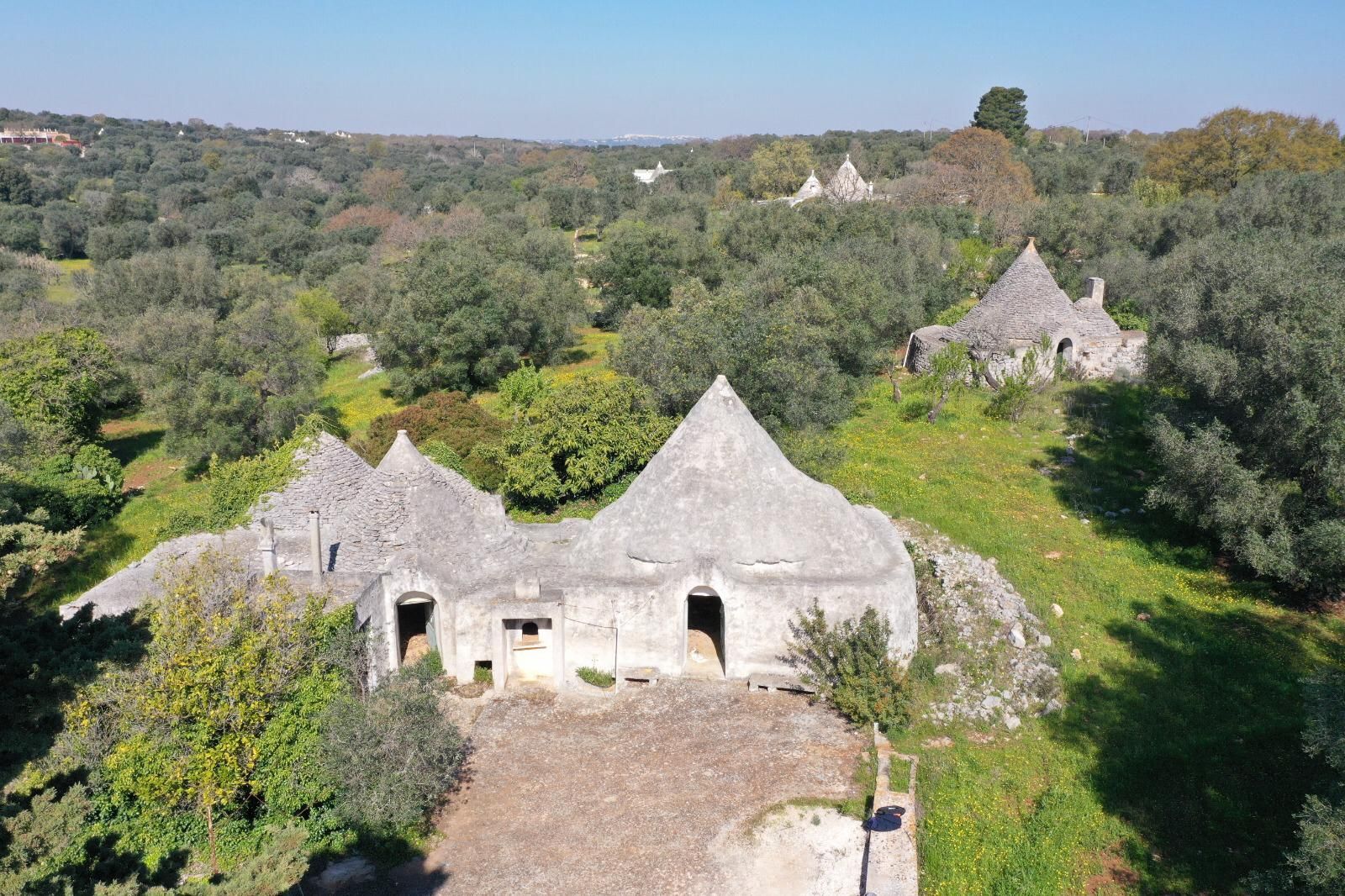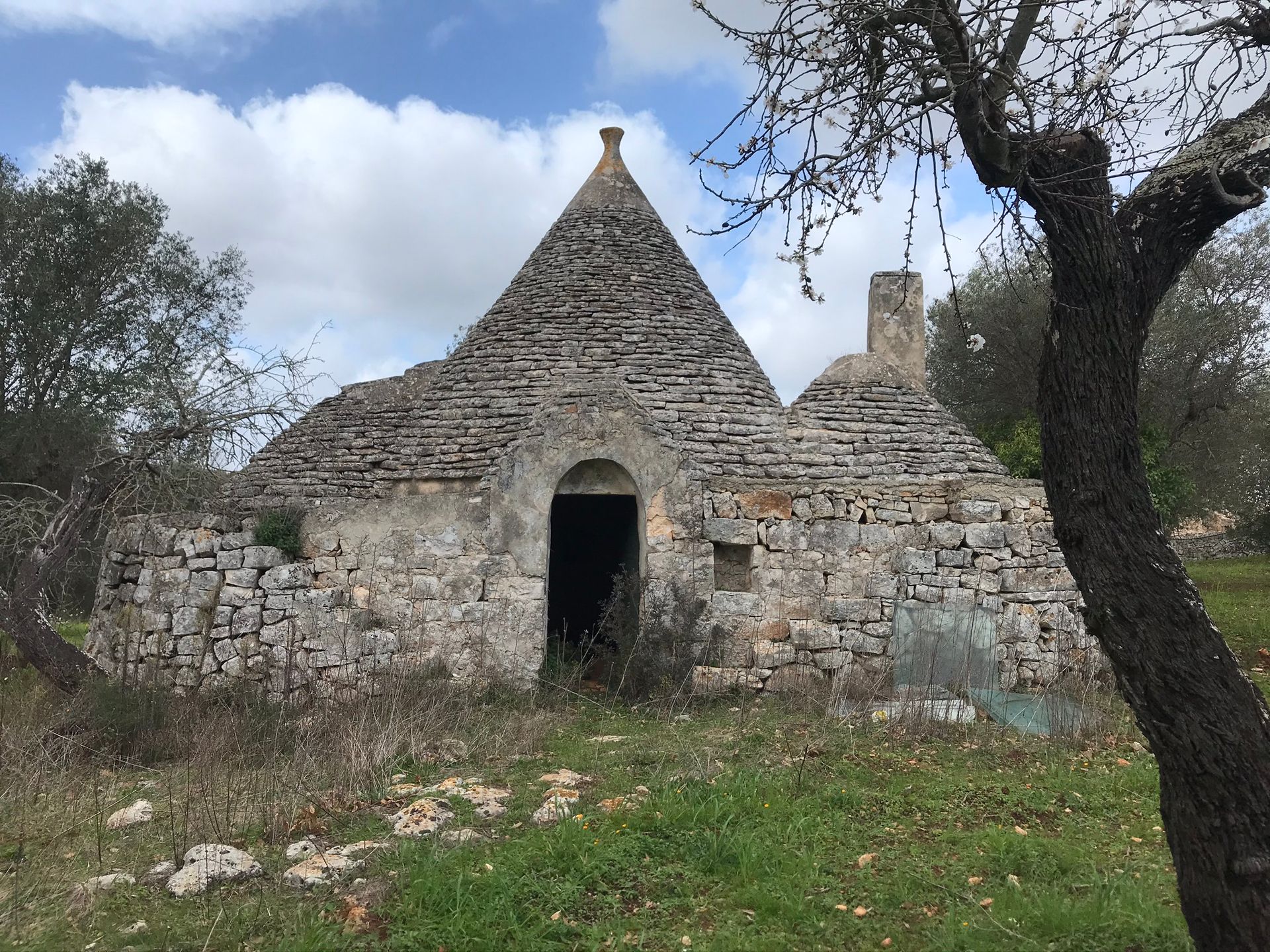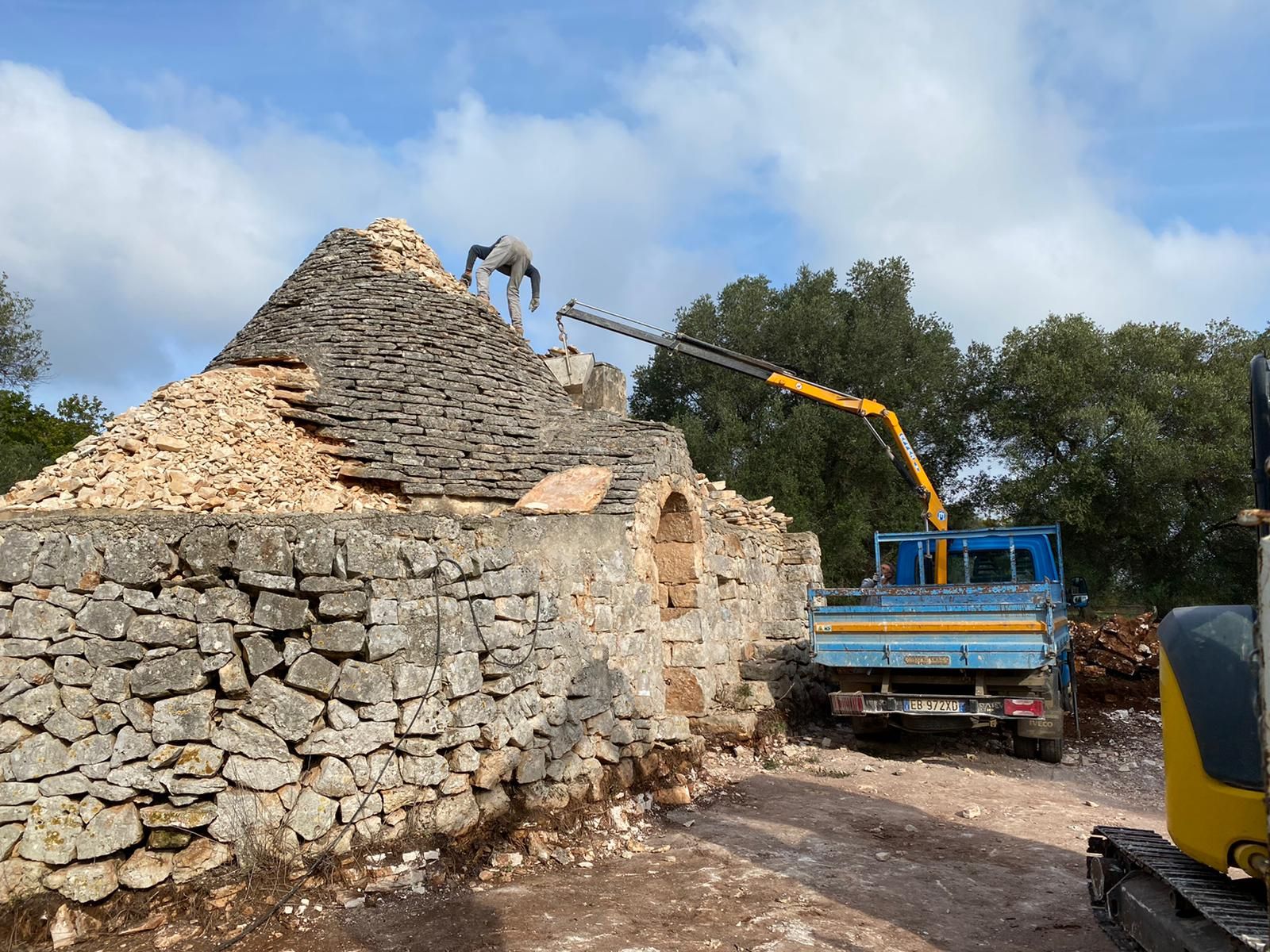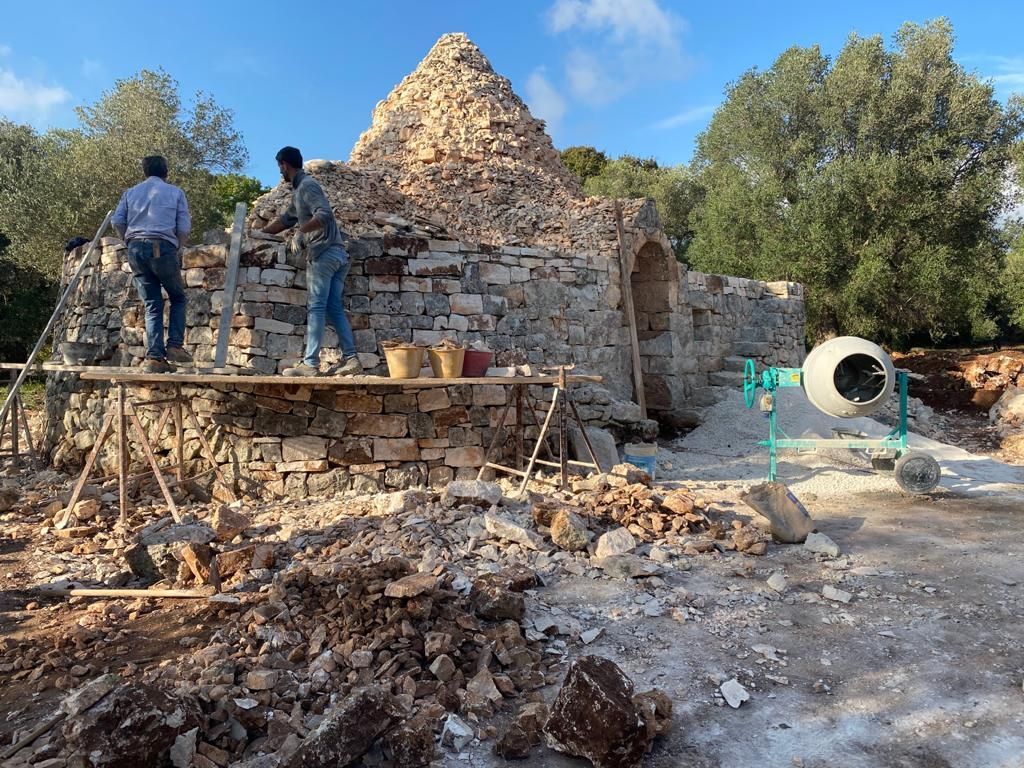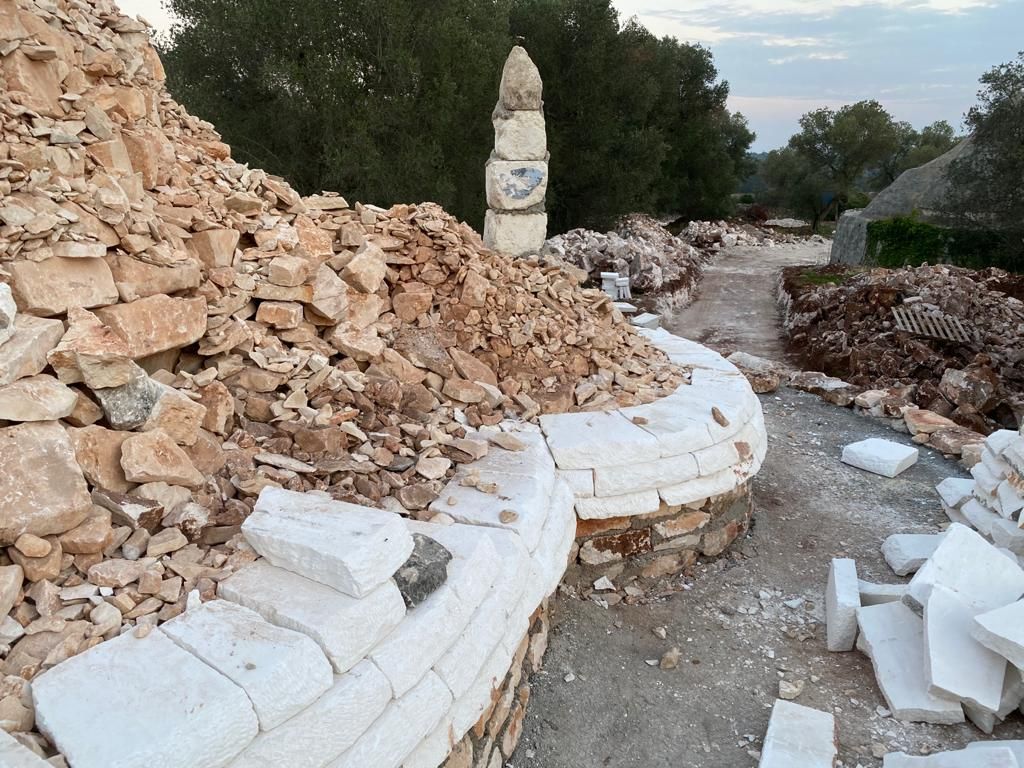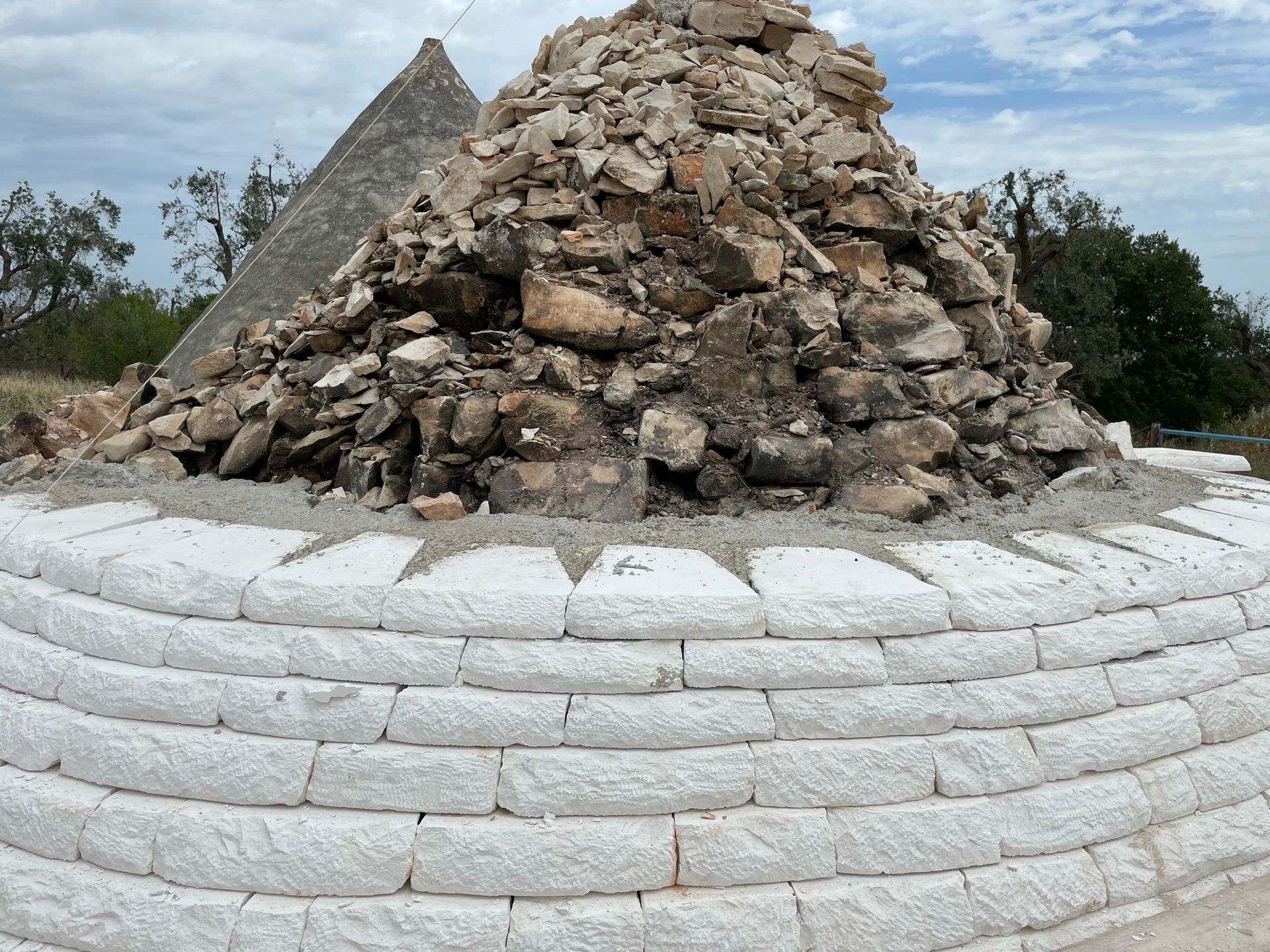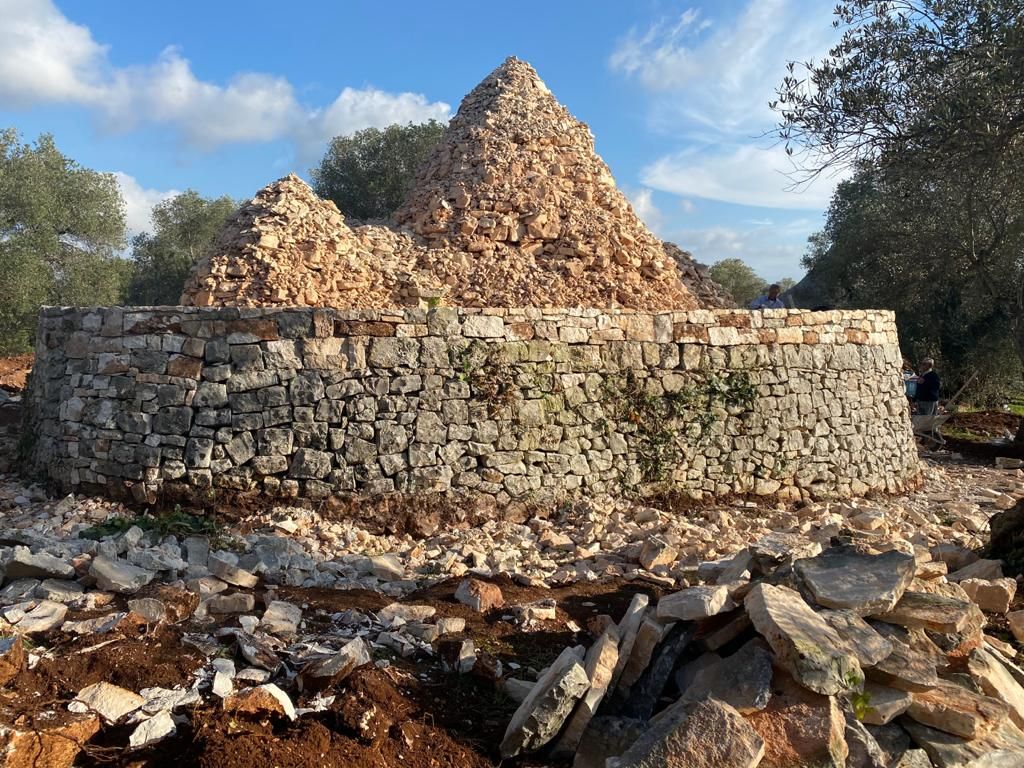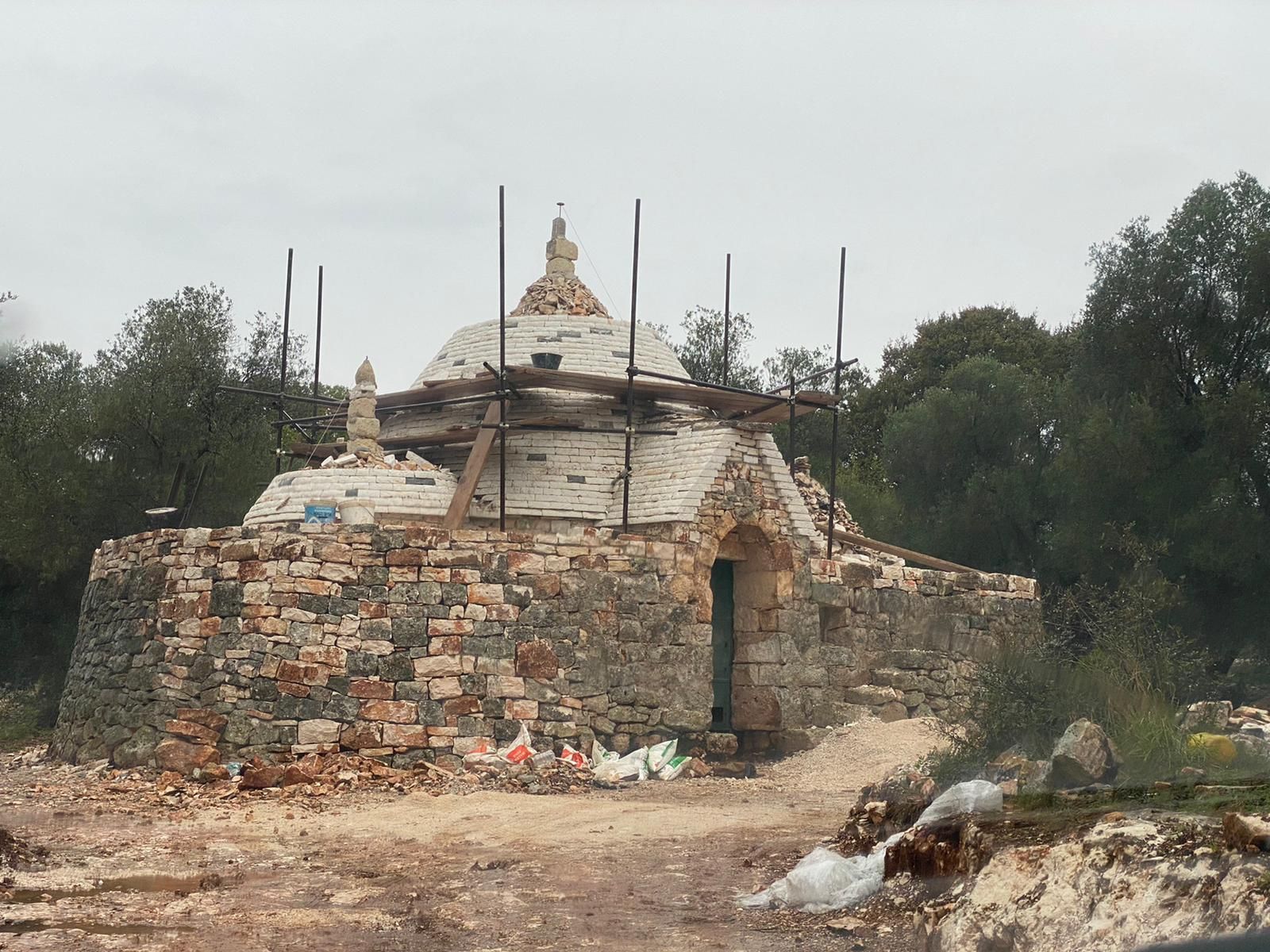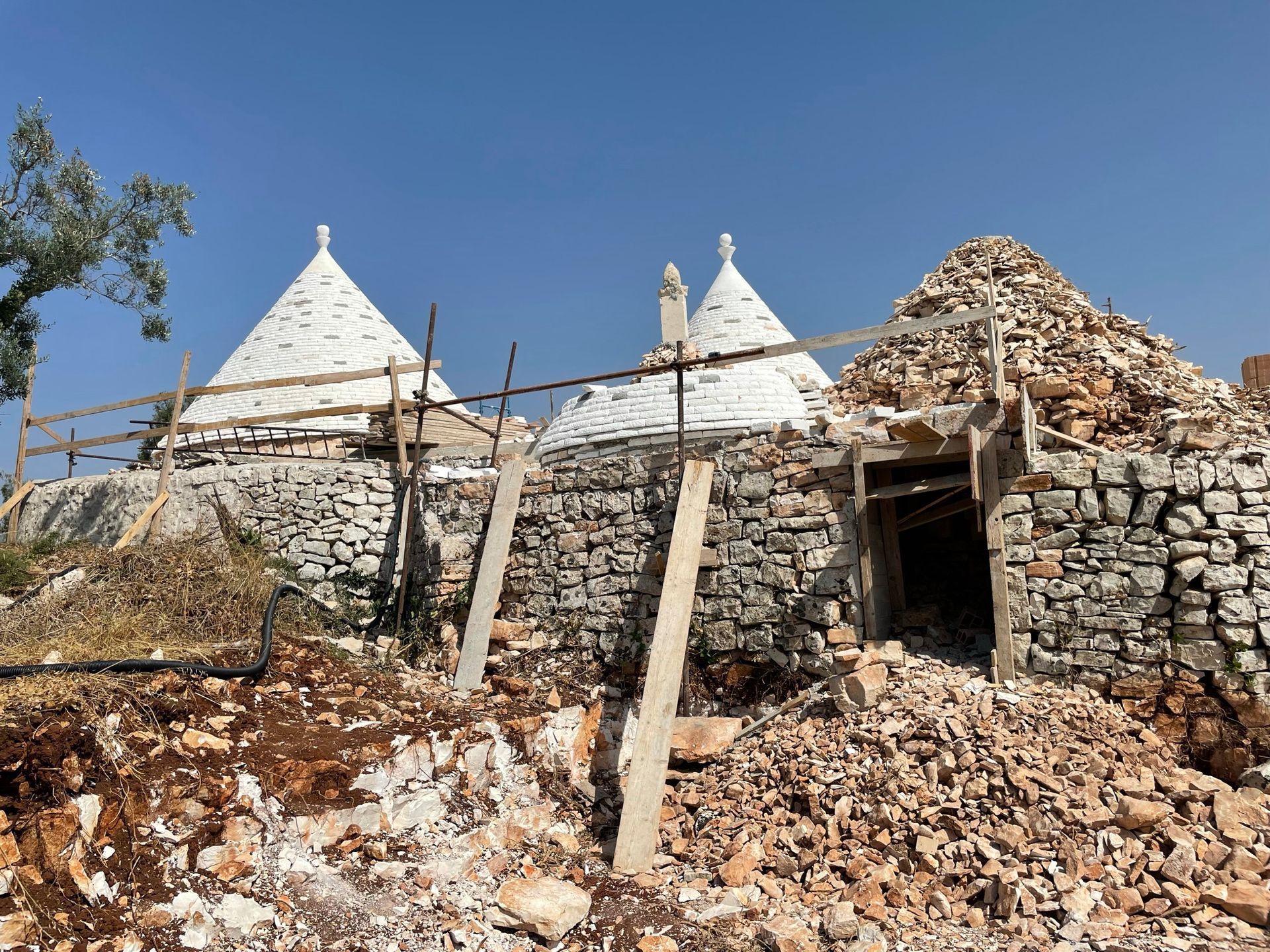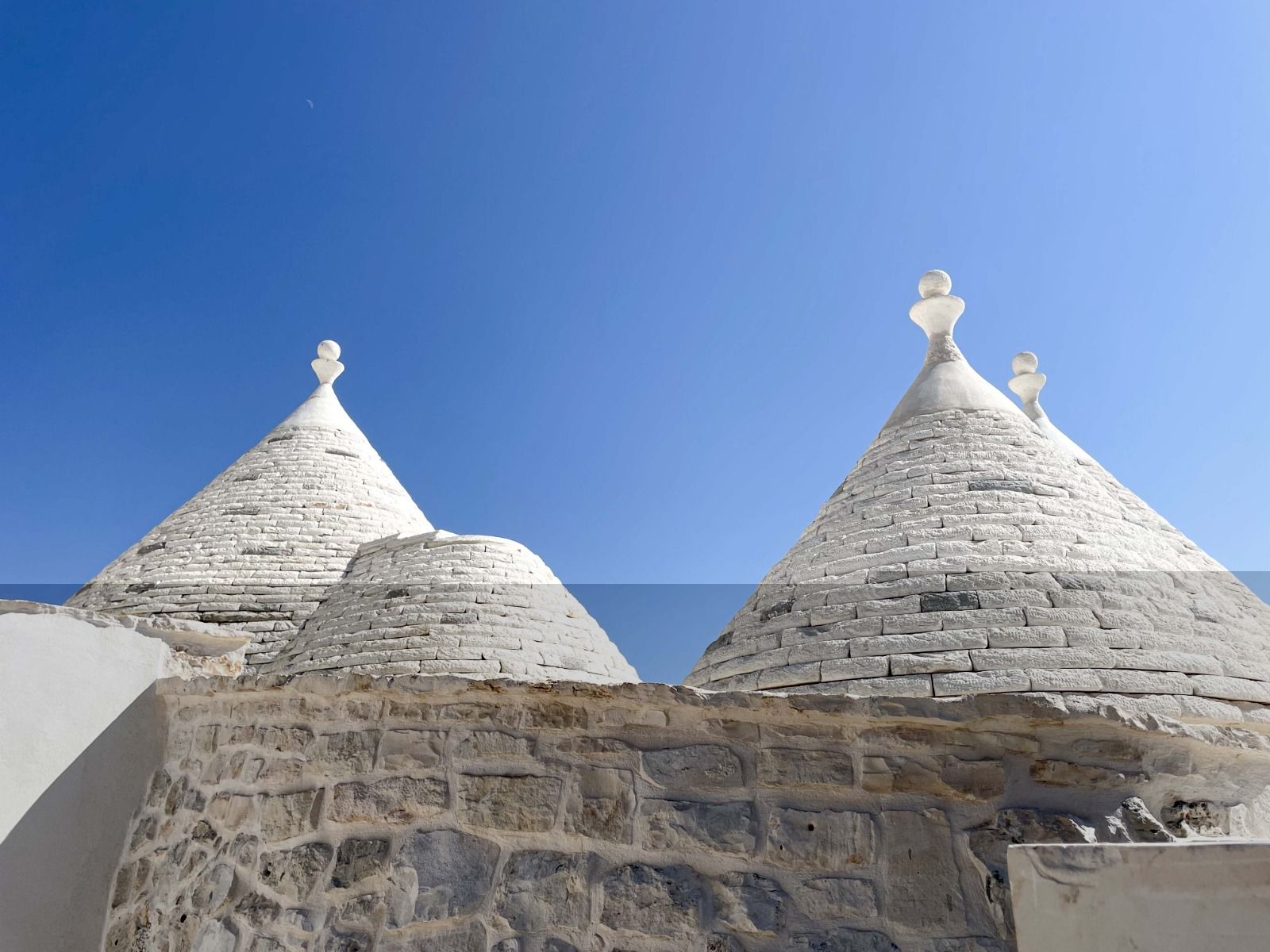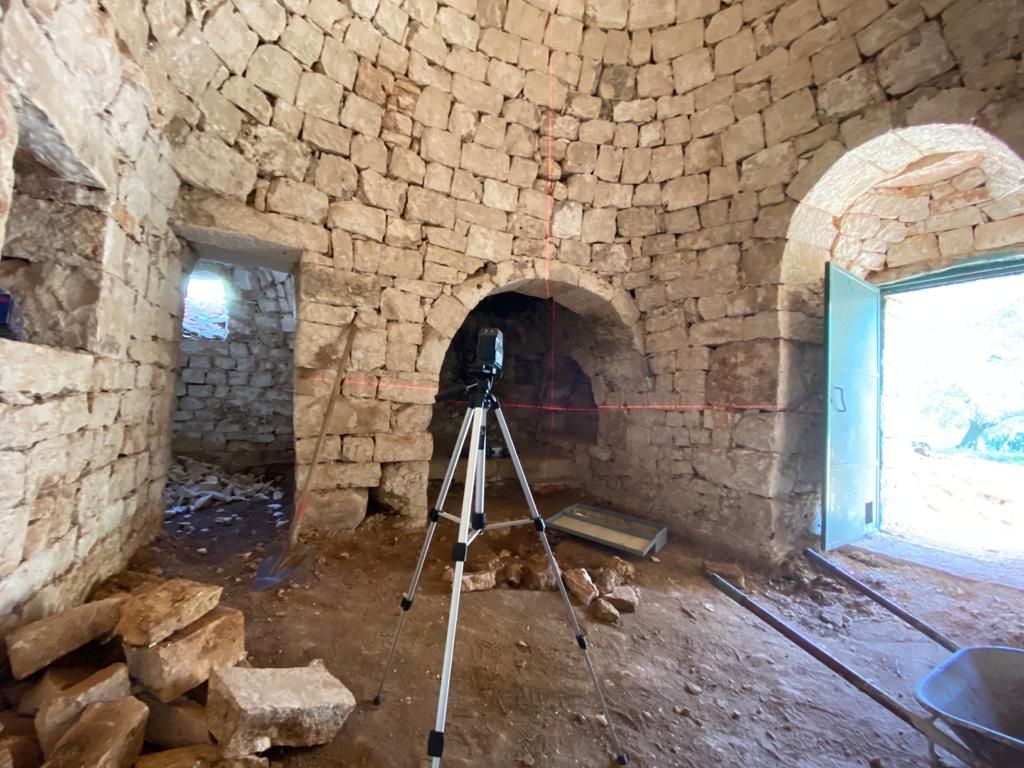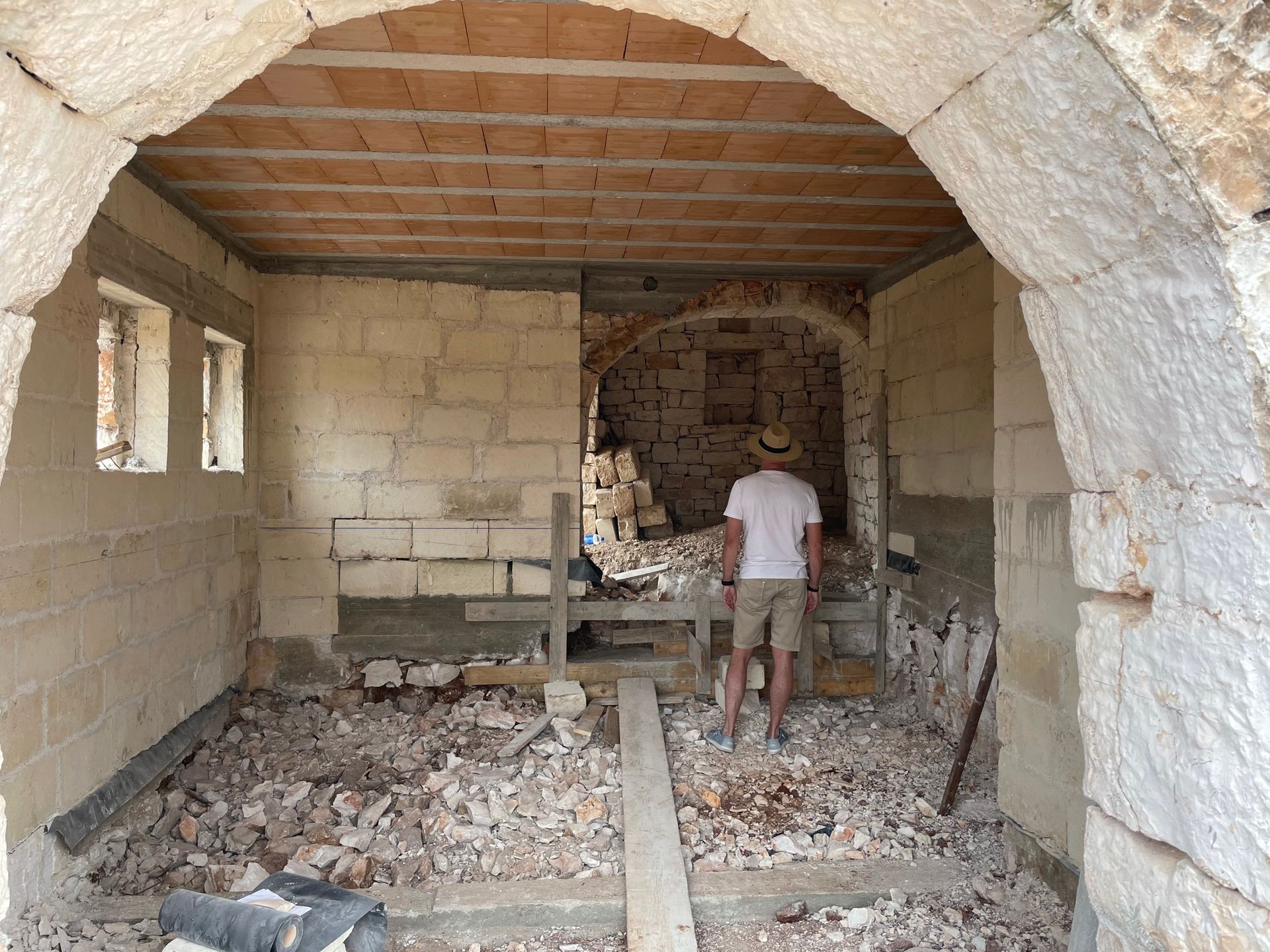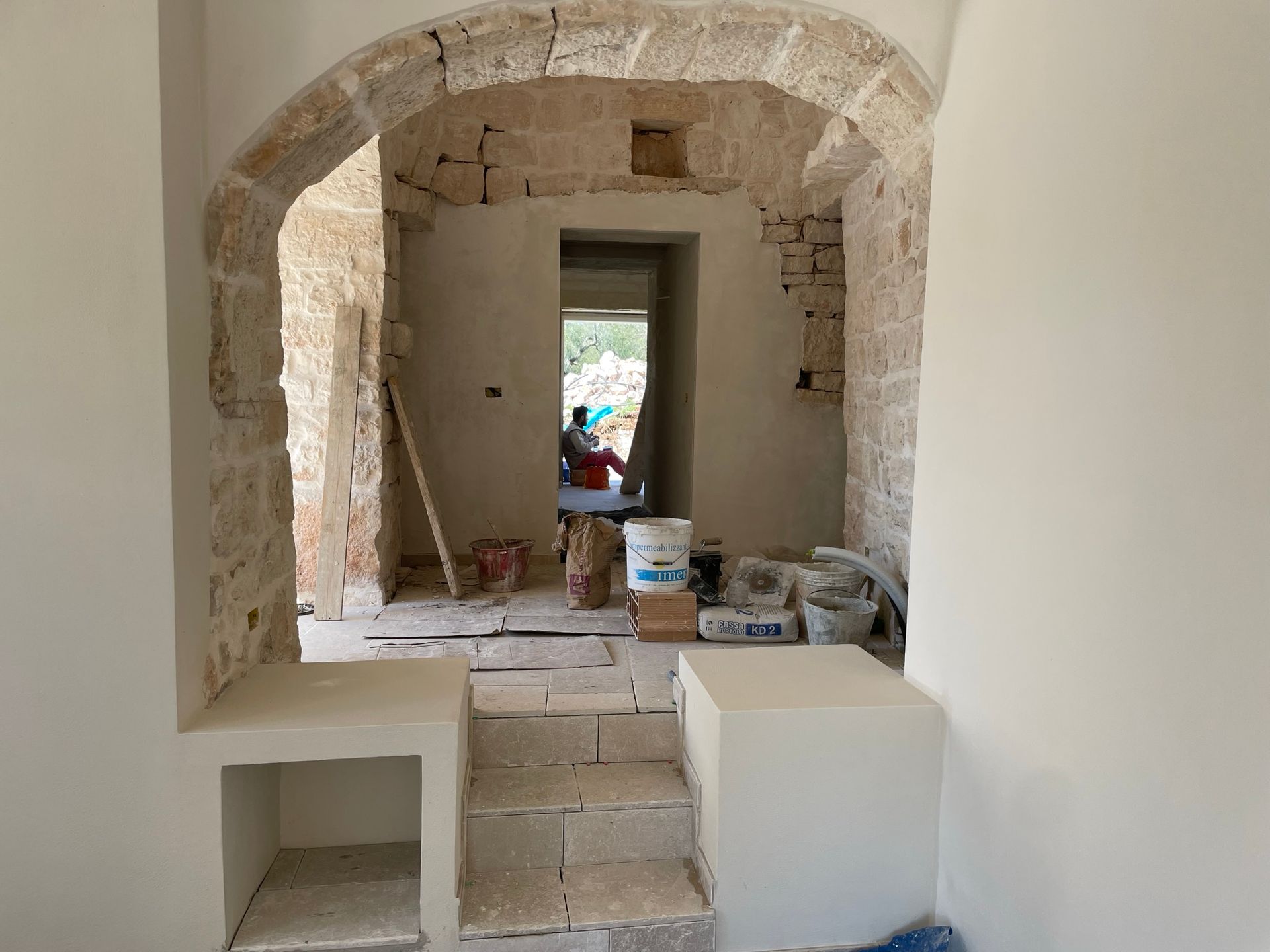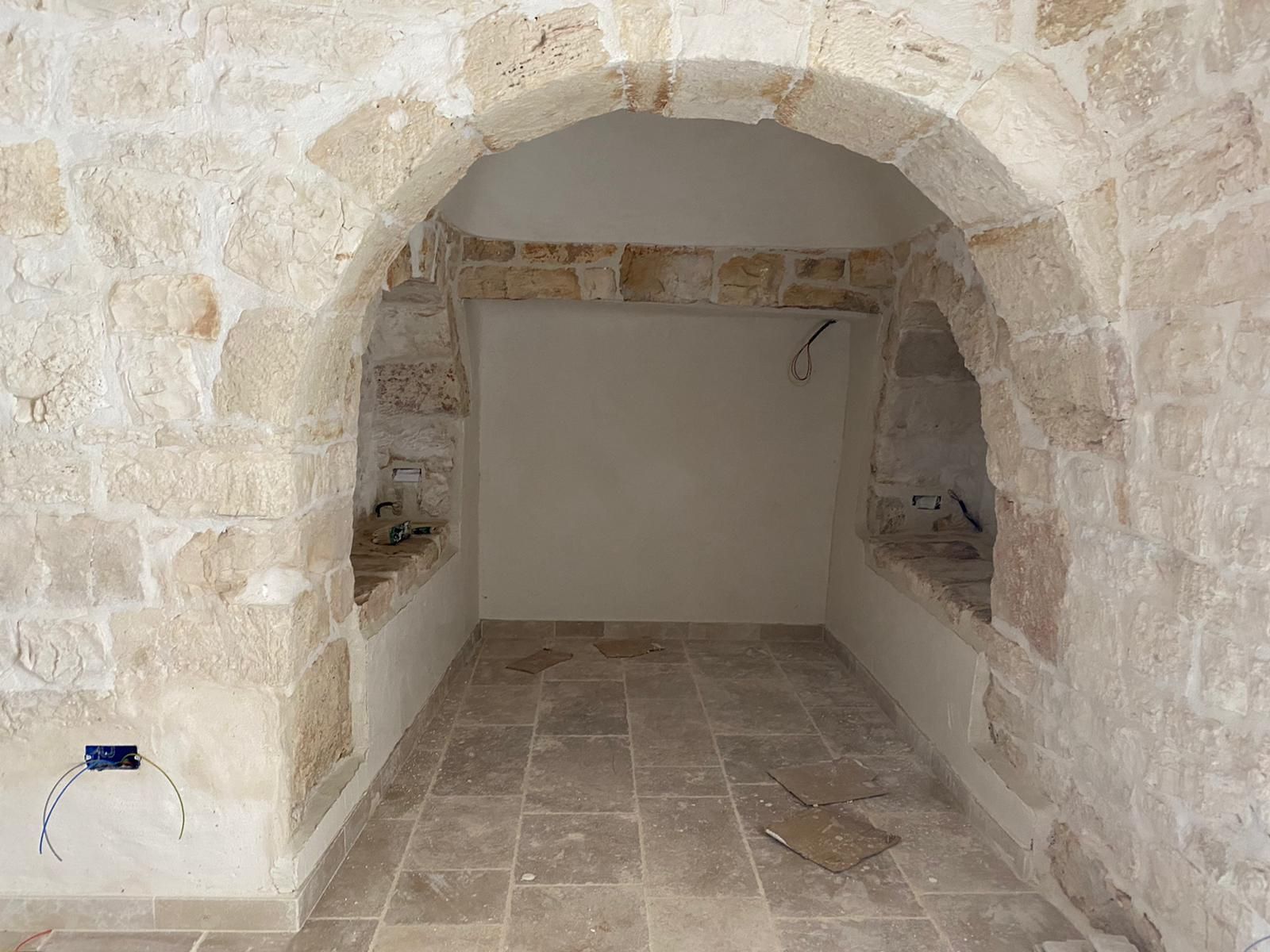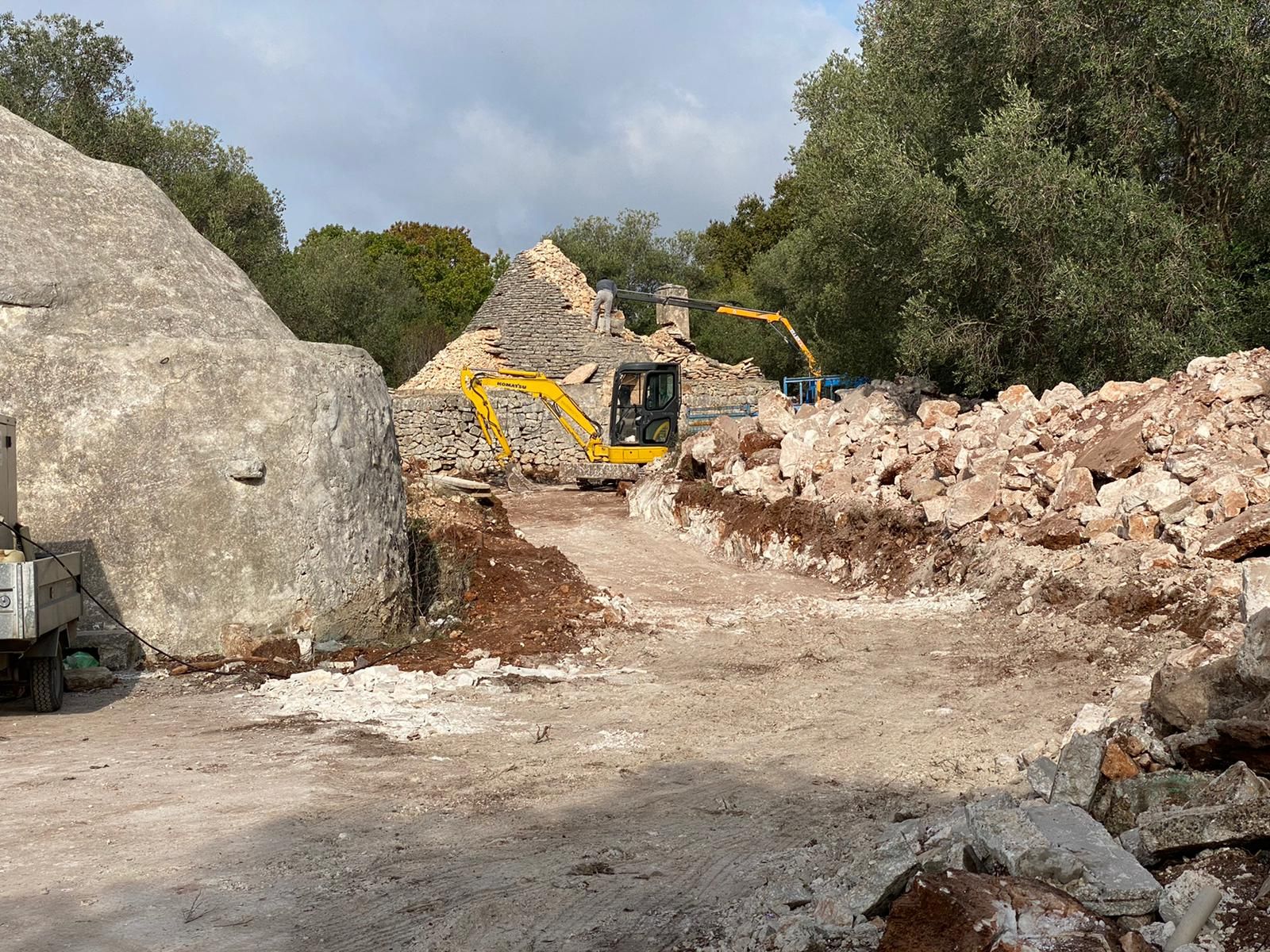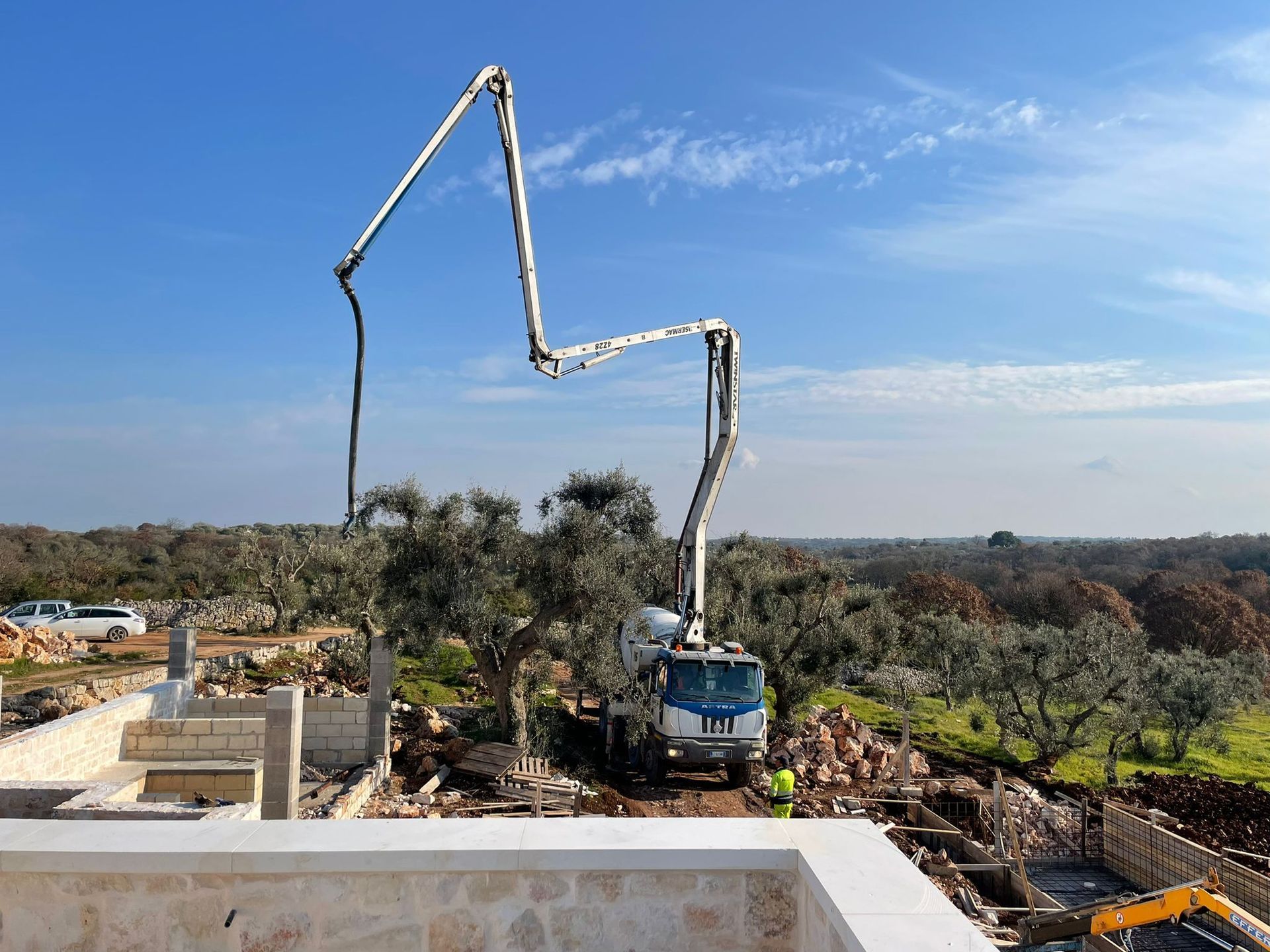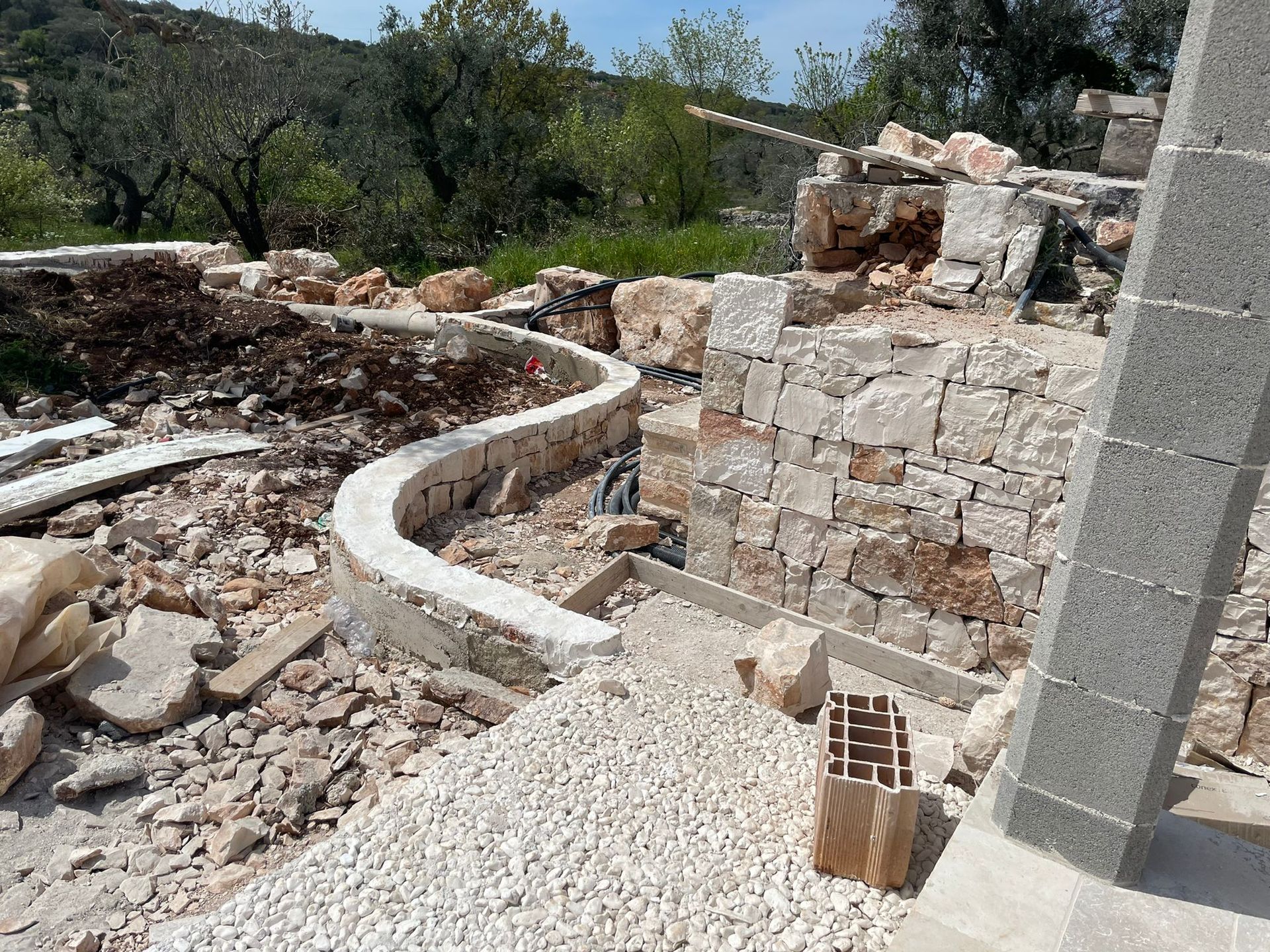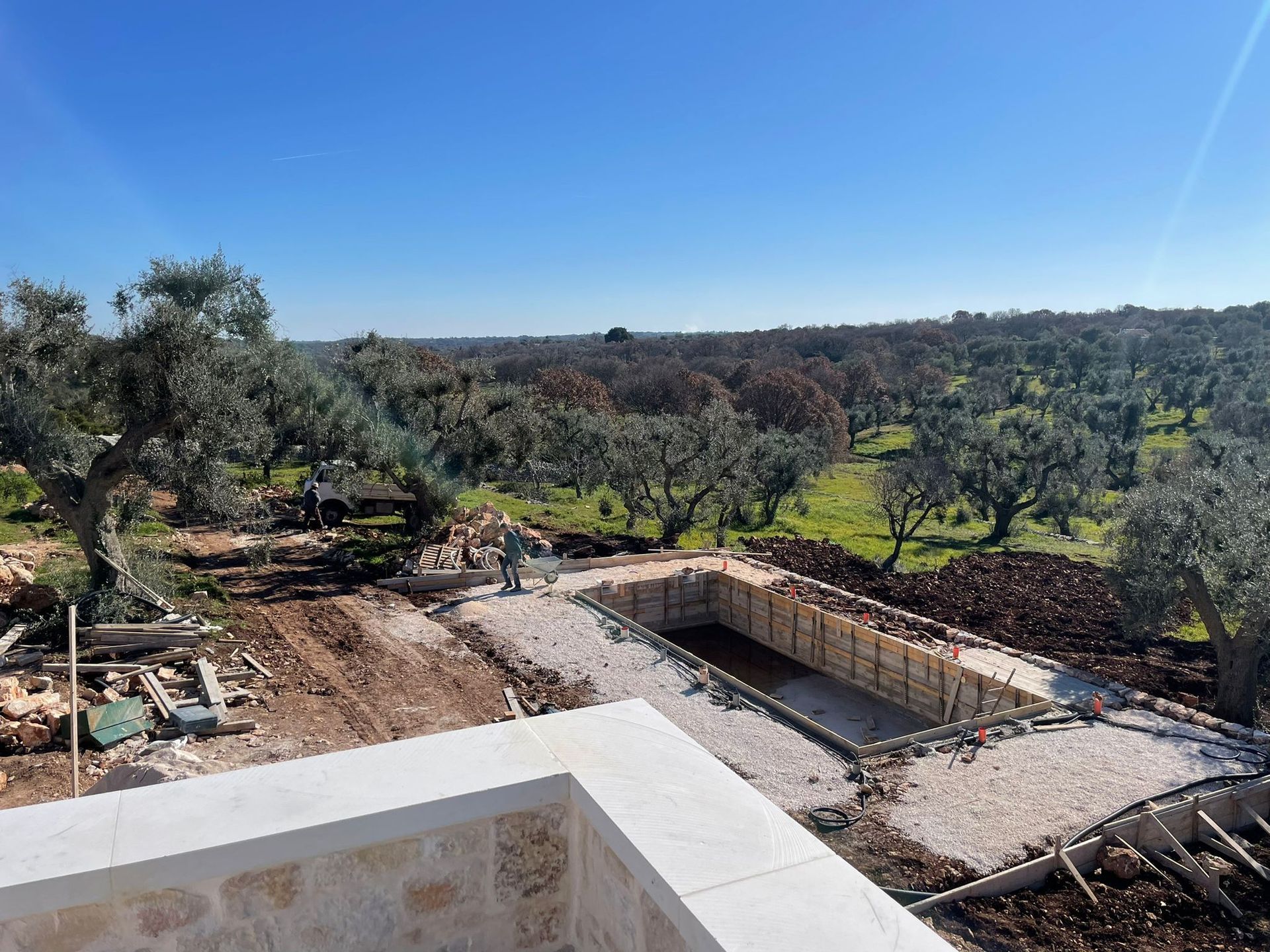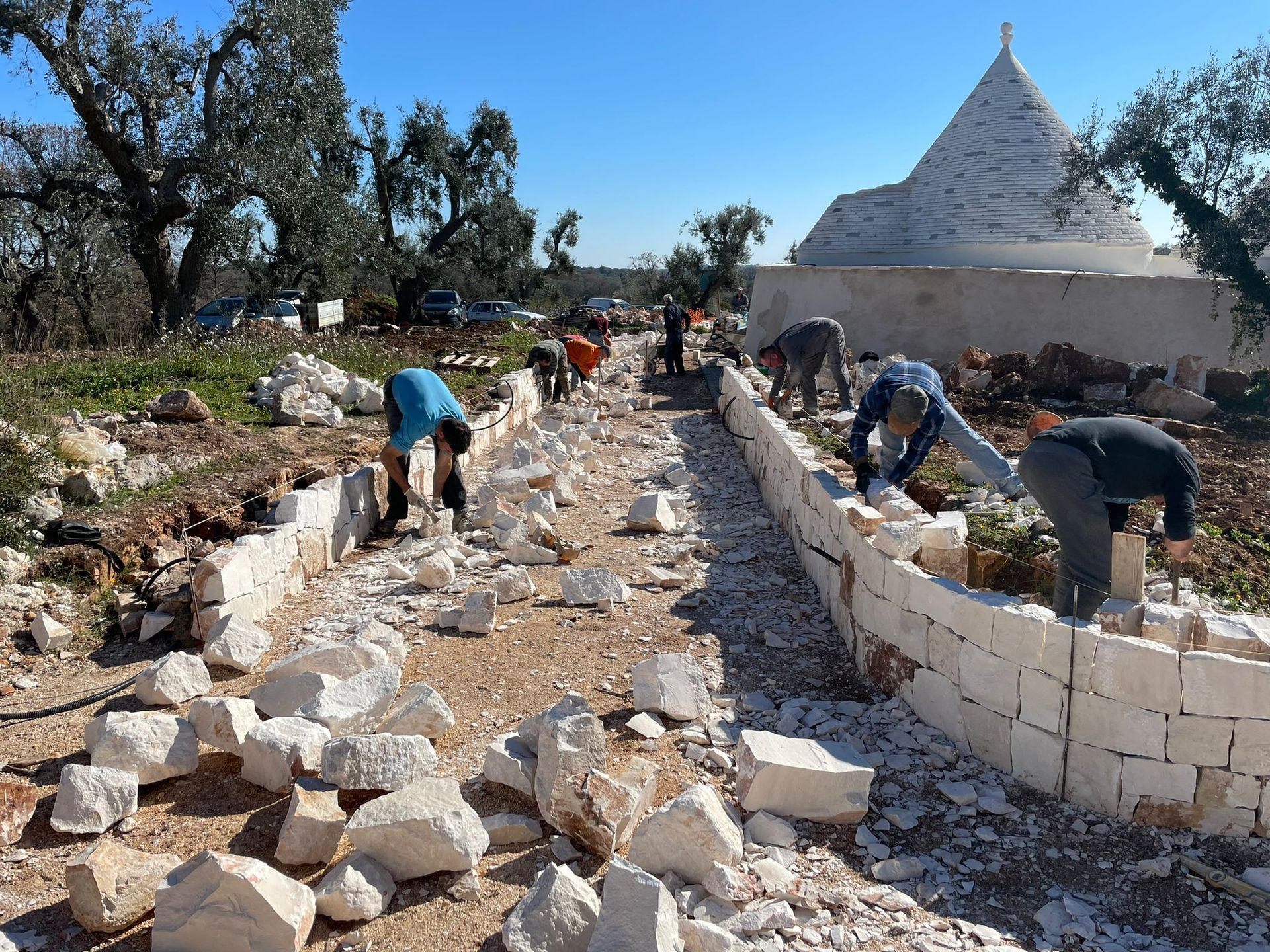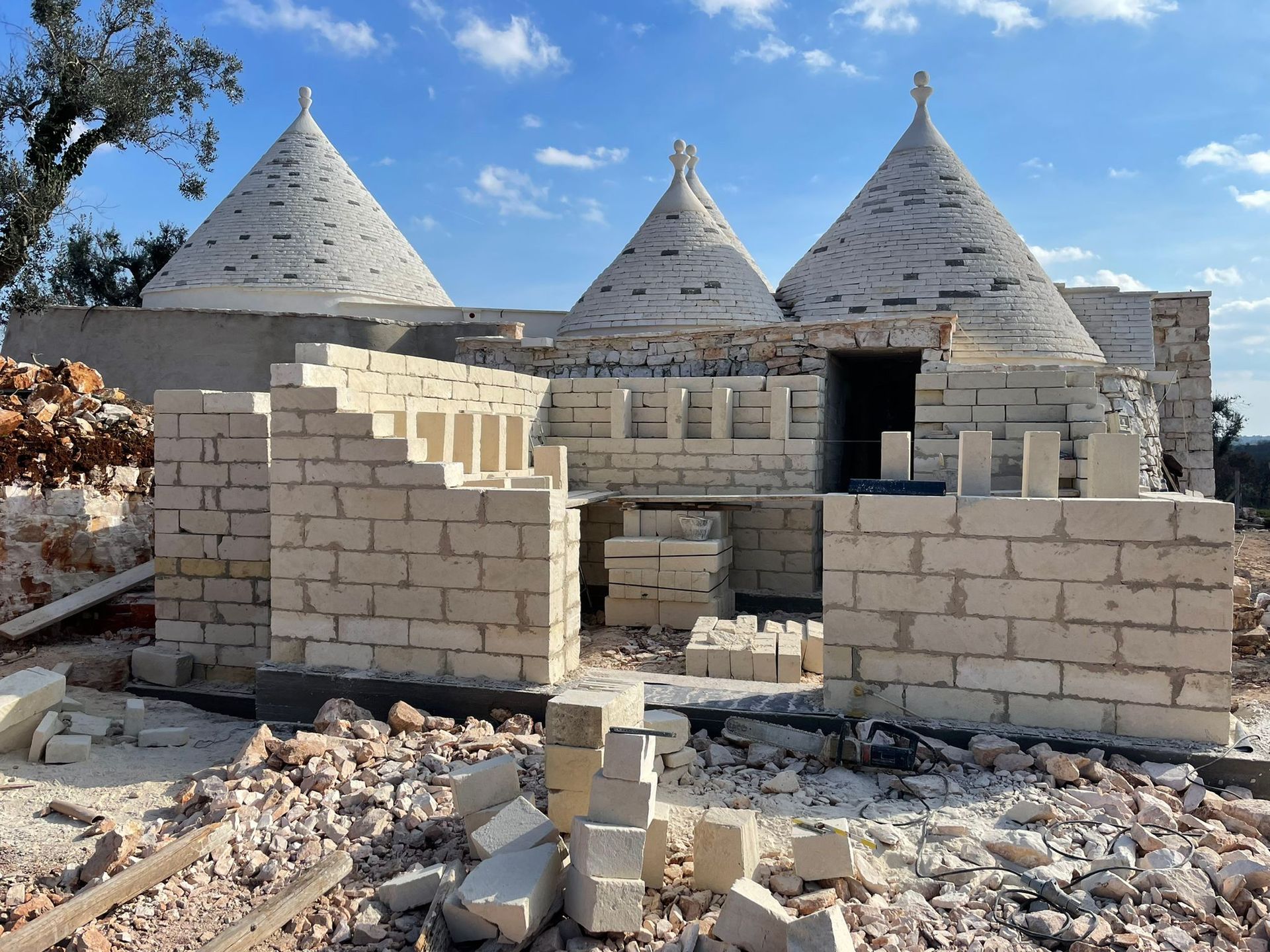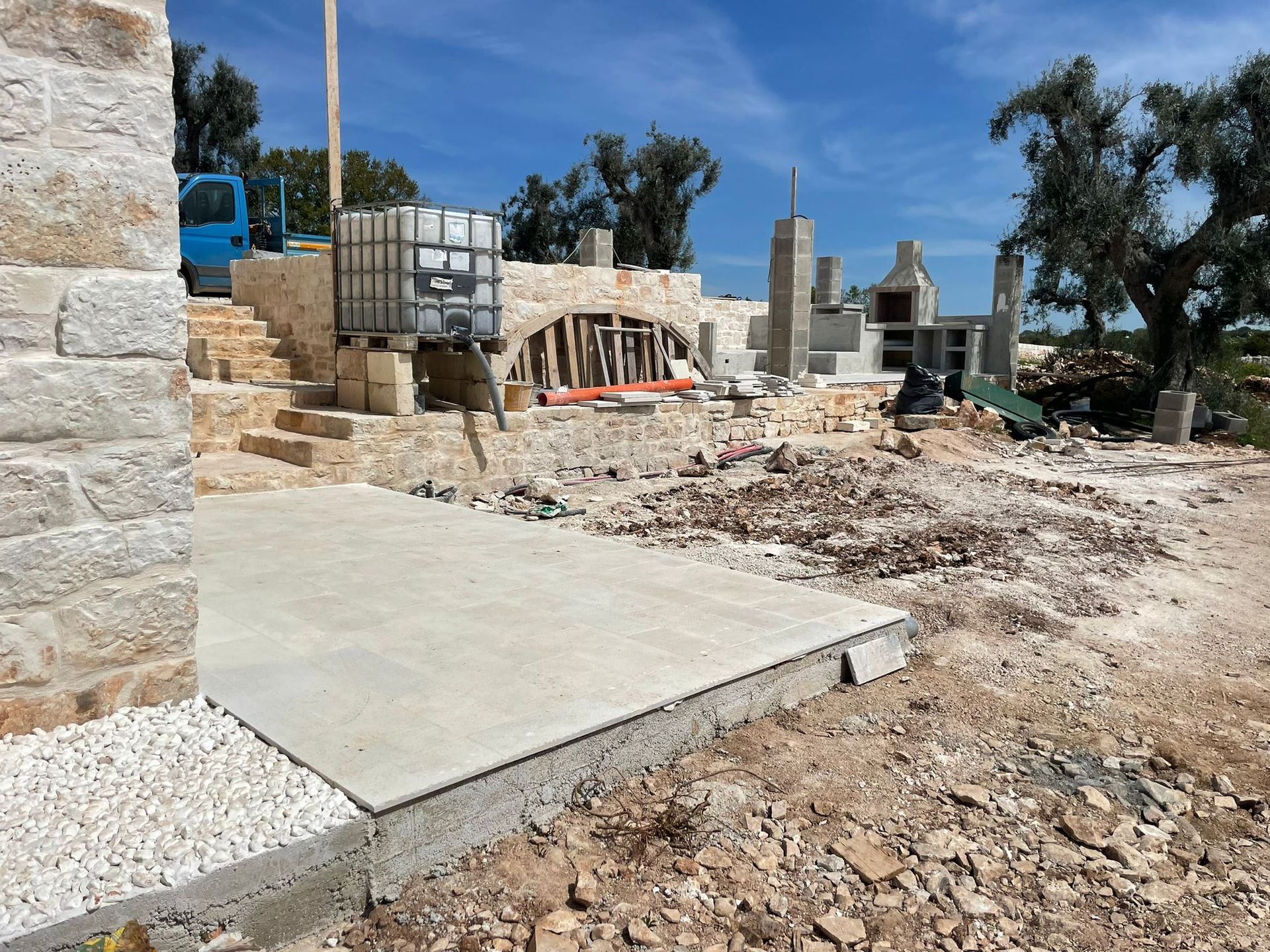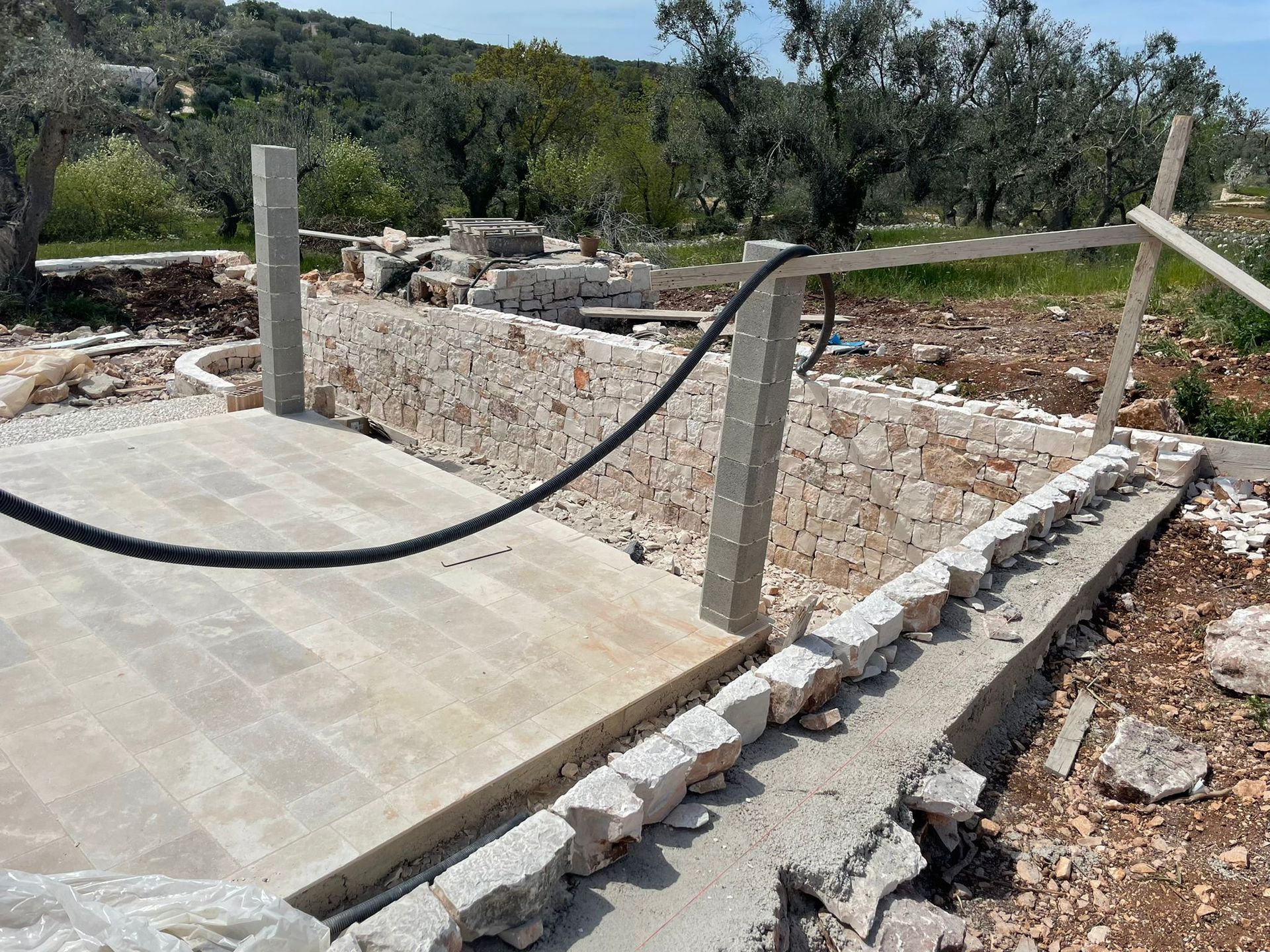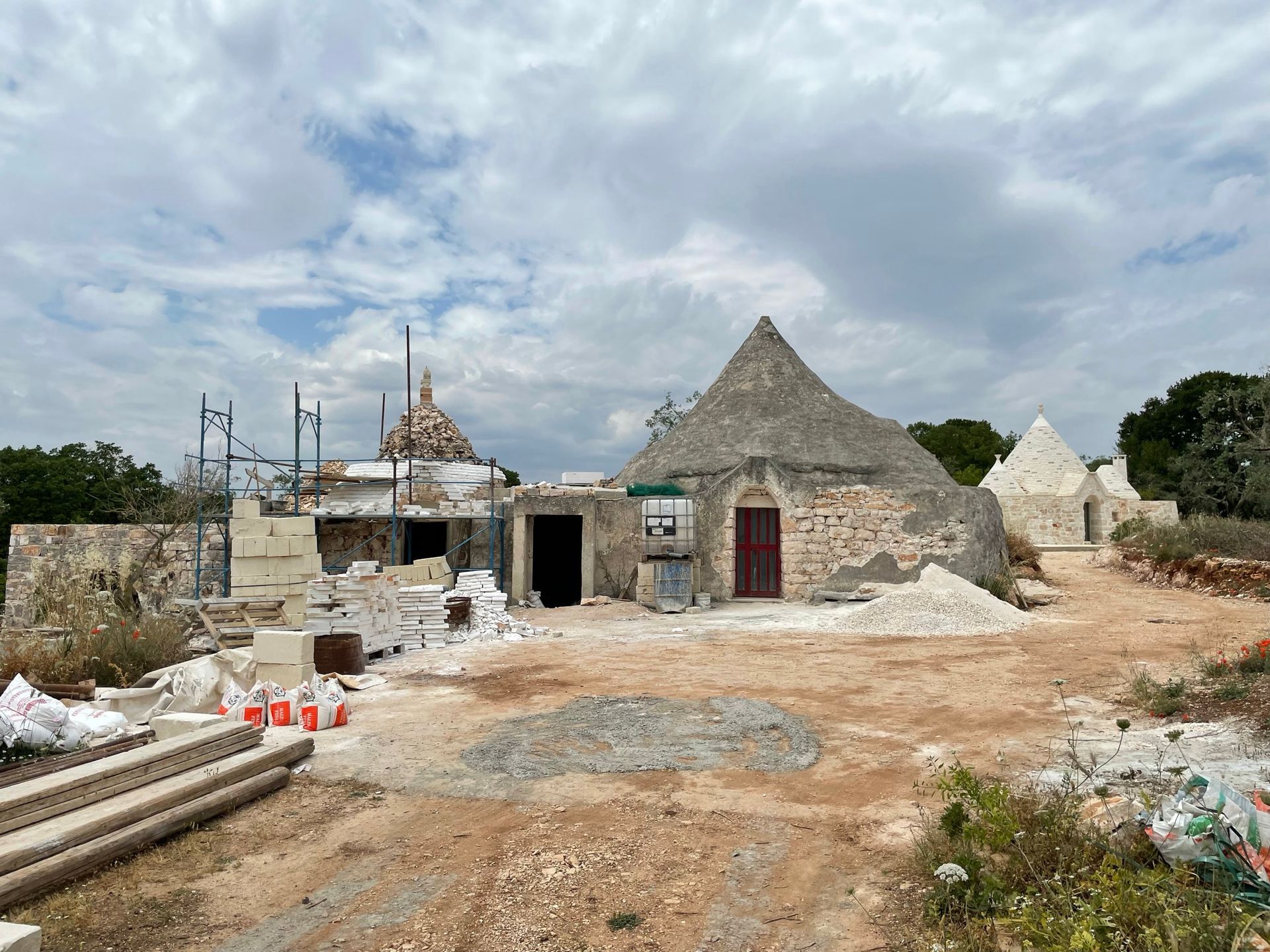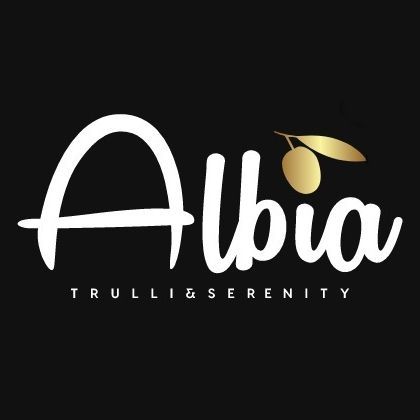Before – The original state
When we discovered the trulli of Albia, they had been abandoned for decades. Vegetation had invaded the collapsed roofs, the stones had come loose, and the walls bore the marks of time.
Yet, despite the rubble and the humidity, something powerful remained: a presence, a memory.
This place had a soul. It was just waiting to be awakened.
Renovation of the cones
Made brittle by erosion and numerous winters, the cone stones had become unstable. They had to be dismantled one by one. Each trullo was patiently emptied, sorted, and cleaned. The most damaged stones were replaced with new ones, extracted from local quarries, then hand-carved on site by specialized craftsmen. This meticulous work restored the roofs to their original shape, while respecting ancestral dry construction techniques.
Wall renovation
The renovation of the walls required the same care as that of the roofs. Once the old plaster, coatings, and cement layers were removed, a complete sandblasting was carried out to reveal the stone in its natural state. This delicate operation restored the original color of the walls, their raw texture, and the traces of the craftsmanship. Each room thus regained its authenticity, its light, and the simple beauty that is the soul of the trulli.
Outdoor facilities
Around the trulli, everything remained to be imagined. The land, overgrown with brush, revealed only a few gnarled olive trees and collapsed stone walls. Little by little, the lines of the garden were redrawn: the low walls were rebuilt by hand, the olive grove was cleared and thinned, and new paths were laid out to connect the different spaces. A swimming pool, an outdoor kitchen, a veranda, and a pétanque court were placed in the landscape, in harmony with the old volumes. Here, each layout seeks to extend the spirit of the place—simple, solid, turned towards light and nature.




